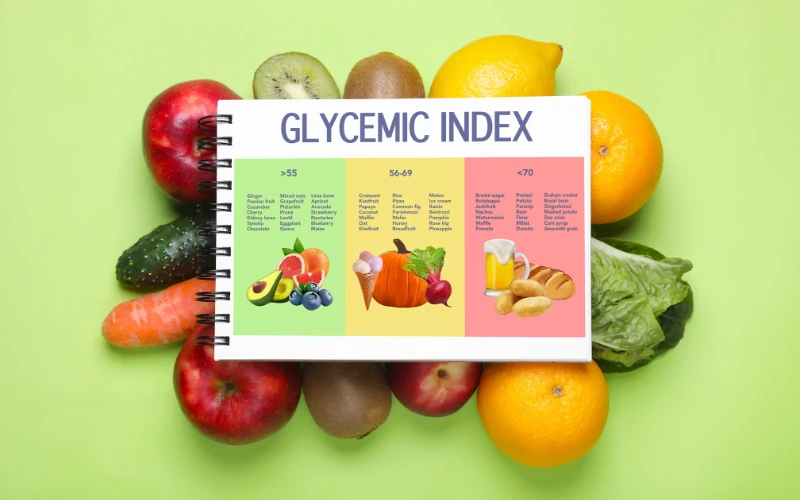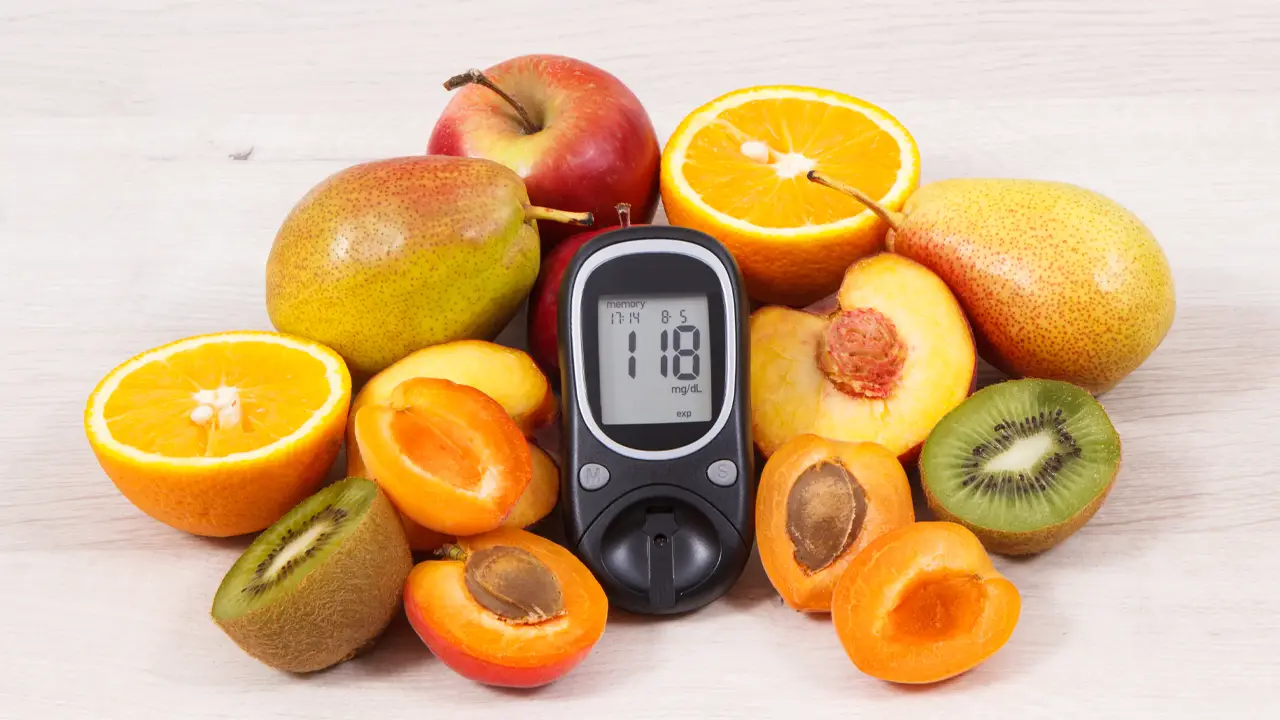For individuals managing diabetes, the selection of fruits plays a crucial role in maintaining optimal health. While fruits are generally considered nutritious, not all are equally compatible with diabetic dietary plans due to their varying effects on blood sugar levels. In this article, we’ll explore five strategies for identifying fruits that align with diabetic needs, along with insights on which ones to avoid.
Additionally, we’ll discuss the importance of remote patient monitoring in tracking dietary habits and blood sugar levels to support effective diabetes management. This includes a curated list of recommended fruits empowering readers to make informed choices for their health.
Best Fruits for People with Diabetes
When choosing fruits for a diabetes diet, certain fruits for diabetics are better than others. Here are some of the best fruits to eat if you have diabetes:
- Berries – Berries are low in sugar and high in fiber, making them the excellent choice for people with diabetes. They are also packed with antioxidants and vitamins.
- Oranges – Oranges are a great source of vitamin C, which can help boost your immune system. They are low in calories and high in fiber.
- Cherries – Cherries are high in antioxidants and anti-inflammatory compounds, which can help reduce the risk of developing type 2 diabetes.
- Watermelon – Watermelon is a low-sugar fruit high in antioxidants and vitamins. It can help lower blood pressure and reduce the risk of developing type 2 diabetes.
- Apples – Apples are a good source of fiber and vitamin C. They are also low in calories and can help regulate blood sugar levels.
- Other good fruits for people with diabetes include citrus fruits, like grapefruit and lemons, and avocados, which are high in healthy fats.
Fruits to Avoid
While most fruits can be part of a healthy diabetes diet, some fruits are best avoided due to their impact on blood sugar levels. Here are some of the worst fruits for people with diabetes:
- Dried fruit – Dried fruit is high in sugar and can quickly raise blood sugar levels. They are also easy to overeat, which can lead to consuming too many carbohydrates.
- Fruit juice – Fruit juice is often high in added sugar and lacks the fiber found in whole fruit. It can also raise blood sugar levels quickly and lead to weight gain.
- Canned fruit – Canned fruit is often packed in syrup, which can increase its sugar content. It is also processed and lacks the same amount of fiber found in fresh fruit.
- Pineapple – Pineapple is high in natural sugar and can quickly raise blood sugar levels. It is also low in fiber, which can lead to spikes in blood sugar.
- Mango – Mango is high in natural sugar and can cause spikes in blood sugar levels. It is also relatively low in fiber.
By avoiding these fruits and choosing whole fruits that are low on the glycemic index and high in fiber, people with diabetes can manage their blood sugar levels and promote a healthy diet.
Choosing the Best Fruits to Eat for People with Diabetes
When it comes to selecting the best fruits for people with diabetes, there are a few important factors to consider:
- Type of fruit – While some fruits can cause spikes in blood sugar levels, others have a more gentle impact on blood sugar. Examples of low-glycemic fruits include berries, cherries, and citrus fruits.
- Portion size – Overeating fruit can lead to consuming too many carbohydrates and spikes in blood sugar levels. It is important to keep portion sizes in check and to spread fruit intake throughout the day.
- Fresh or frozen – Fresh and frozen fruits are generally better choices than processed or canned fruit packed in syrup. Fresh and frozen fruits retain fiber and are less likely to contain added sugars.
- Pairing with other foods – Pick the best fruits and pair them with other foods that contain healthy fats or protein can help slow down the absorption of sugar into the bloodstream. For example, adding almond butter to an apple can help balance blood sugar levels.
- Meeting daily nutritional needs – While fruit can be a healthy part of a diabetes diet, it is important to make sure you also consume a variety of non-starchy vegetables, lean proteins, and healthy fats to meet daily nutritional needs.
Consulting with a registered dietitian or certified diabetes care and education specialist can help individuals with diabetes choose the right variety of fruits and develop a balanced diet that meets their daily nutritional needs.
Incorporating Fruit into a Diabetes Diet
While it is essential for people with diabetes to choose the right fruits and monitor their intake, incorporating fruit into a diabetes diet can have many health benefits. Here are some tips for including fruit in a diabetes meal plan:
- Keep track of carbohydrate intake – It is vital to keep track of the number of carbohydrates in each serving of fruit and to spread fruit intake throughout the day.
- Opt for whole fruit – Whole fruit is generally a better choice than fruit juice, which can be high in sugar and low in fiber.
- Choose fruits that are high in fiber – High-fiber fruits, such as berries and apples, can help slow down the absorption of sugar into the bloodstream.
- Consider frozen or canned fruit – Frozen or canned fruit packed in water can be a convenient option when fresh fruit is unavailable.
- Pair fruit with other healthy foods – Pairing fruit with other foods that contain healthy fats or protein can help slow down the absorption of sugar into the bloodstream.
Understanding the Glycemic Index of Fruits
Understanding the glycemic index (GI) of fruits is essential for individuals with diabetes to make informed dietary choices. The glycemic index is a scale that ranks carbohydrate-containing foods based on how much they raise blood sugar levels compared to pure glucose, which has a GI of 100. Foods with a high GI cause blood sugar levels to spike more rapidly, while those with a low GI are absorbed more slowly, resulting in a slower rise in blood sugar levels.
- Glycemic Index (GI): The GI measures how quickly carbohydrates in a food raise blood sugar levels. Foods are ranked on a scale from 0 to 100, with pure glucose having a GI of 100. Low-GI foods have a GI of 55 or less, moderate-GI foods have a GI of 56 to 69, and high-GI foods have a GI of 70 or more.
- Glycemic Index apply to fruits: Fruits contain natural sugars, primarily fructose, which affects their GI. Some fruits have a low GI, meaning they cause a gradual increase in blood sugar levels, while others have a higher GI and may cause more rapid spikes.
- Choosing fruits based on their Glycemic Index: Opt for fruits with a low or moderate GI to help stabilize blood sugar levels. Examples of fruits with a low GI include berries, cherries, apples, pears, and citrus fruits. Fruits with a higher GI, such as watermelon and pineapple, can still be enjoyed in moderation but should be paired with protein or healthy fats to mitigate their impact on blood sugar levels.
- Monitoring portion sizes and overall diet: While considering the GI of fruits is important, it’s also crucial to monitor portion sizes and overall carbohydrate intake. Pairing fruits with protein or healthy fats can further help slow down the absorption of sugars and stabilize blood sugar levels.

Frequently Asked Questions
Are all fruits safe for people with diabetes to consume?
Not all fruits are created equal in terms of their impact on blood sugar levels. While some fruits have a lower glycemic index and can be enjoyed in moderation, others may cause blood sugar spikes. It’s essential to consult with a healthcare professional to determine which fruits are suitable for your individual dietary needs.
How can I determine if a fruit is suitable for my diabetic diet?
When choosing fruits, consider their glycemic index (GI), which measures how quickly a food raises blood sugar levels. Opt for fruits with a lower GI to help manage blood sugar levels more effectively. Additionally, paying attention to portion sizes and pairing fruits with protein or healthy fats can help mitigate their impact on blood sugar.
Can I still enjoy sweet fruits if I have diabetes?
Yes, you can enjoy sweet fruits in moderation as part of a balanced diabetic diet. However, it’s essential to monitor portion sizes and choose fruits with a lower GI to minimize their impact on blood sugar levels. Pairing sweet fruits with protein or healthy fats can also help balance their effects on blood sugar.
How often should I include fruits in my diabetic diet?
The frequency of fruit consumption depends on individual factors such as blood sugar levels, dietary preferences, and overall health goals. Aim to include a variety of fruits in your diet while monitoring their effects on your blood sugar. Consulting with a healthcare professional or registered dietitian can help determine the appropriate frequency and portion sizes for your specific needs.
Are there any fruits that people with diabetes should avoid completely?
While no fruit needs to be completely avoided, some fruits have a higher GI and may cause more significant spikes in blood sugar levels. These include dried fruits, such as raisins and dates, as well as fruit juices and canned fruits with added sugars. It’s important to consume these fruits in moderation and consider their impact on blood sugar when planning your meals.
Using Remote Monitoring to Manage Diabetes and Enjoy Fruit: The DrKumo RPM Solution
In addition to consulting with a registered dietitian, or a certified diabetes care and education specialist for personalized recommendations, remote patient monitoring (RPM) can be a valuable tool for individuals with diabetes who incorporate fruit into their diet. By utilizing remote monitoring devices and software, healthcare providers can track patients’ blood sugar levels and offer guidance and support as needed to help them maintain healthy blood sugar levels while enjoying the many benefits of fruit. With RPM, individuals with diabetes can feel confident that they are making informed choices about their diet and receiving the necessary support to manage their condition effectively.
DrKumo is a RPM platform that can help individuals with diabetes manage their condition and incorporate fruit into their diet. Through DrKumo’s monitoring devices and software, patients can track their blood sugar levels and receive personalized recommendations and support from healthcare providers. DrKumo offers a mobile app that allows patients to track their fruit intake and progress toward their dietary goals. With the help of DrKumo’s remote patient monitoring platform, individuals with diabetes can effectively manage their condition, enjoy the many benefits of fruit, and improve their overall health and well-being.
Takeaways
Fruit can be a delicious and nutritious part of a diabetes diet if consumed in moderation, and if the right types of fruit are chosen. By keeping track of carbohydrate intake, opting for whole fruit, choosing high-fiber fruits, considering frozen or canned options, and pairing fruit with other healthy foods, individuals with diabetes can reap the many health benefits that fruit offers while also managing their blood sugar levels. It is essential to consult with a registered dietitian or certified diabetes care and education specialist for personalized recommendations on incorporating fruit into a diabetes meal plan.
Incorporate the right fruits into your diet and consider using remote patient monitoring solutions to track your blood sugar levels and receive support and guidance from healthcare providers. Contact us now!
Disclaimer: The information provided in this article is for general informational purposes only and should not be considered a substitute for professional medical advice. Always consult with a healthcare provider before making any dietary changes, especially if you have diabetes or any other medical condition.








